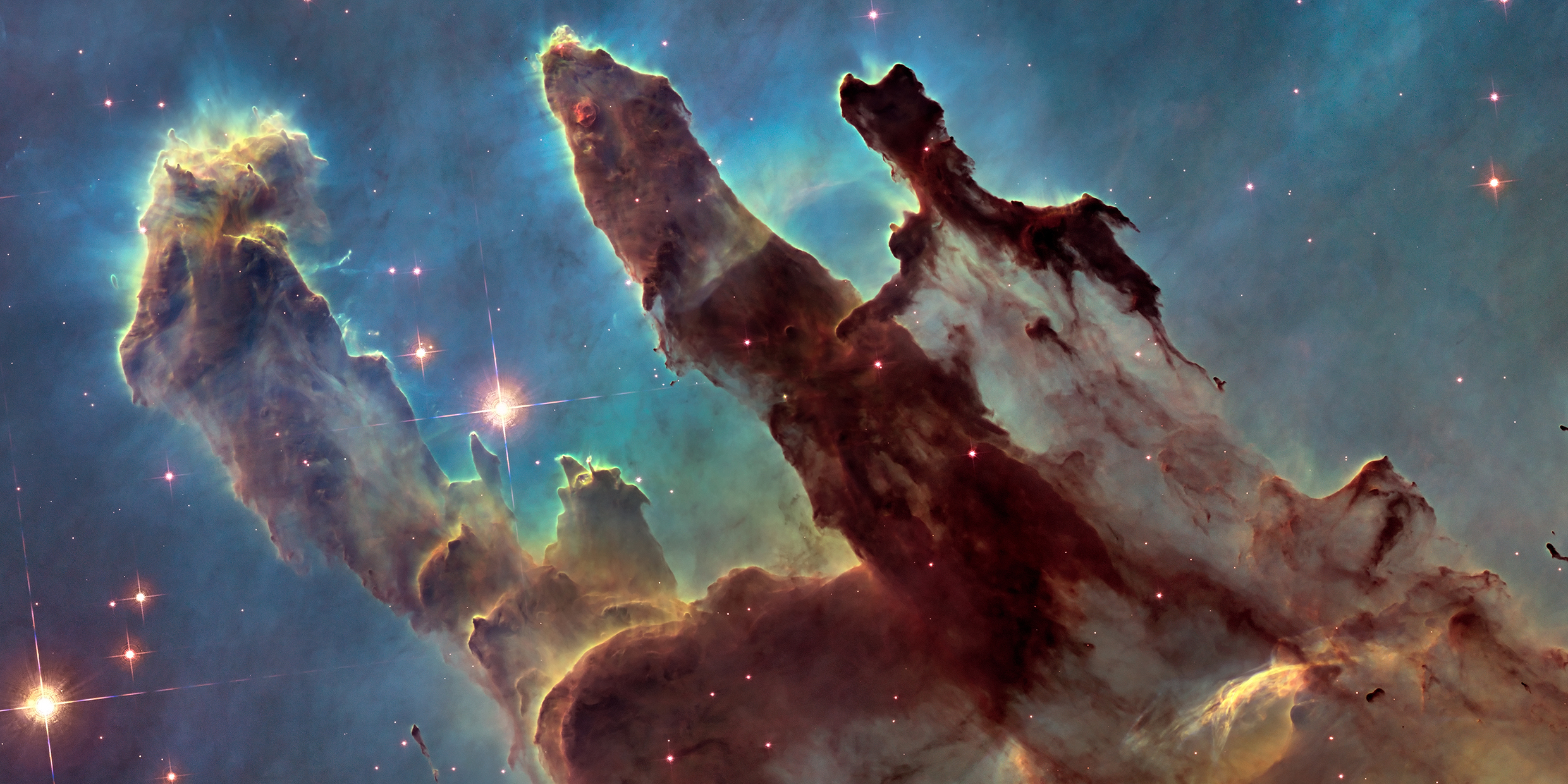Originally published 12 November 2002
Each of the three books of Dante’s Divine Comedy ends with the same words: “the stars.”
The Inferno concludes with distant stars glimpsed through the narrow exit of hell. “We emerged,” says the poet, “and saw the stars.”
Dante’s journey through Purgatory ends on Earth’s highest mountain, with the heavens seemingly not so far away. He is “ready to ascend to the stars.”
Finally, the poet looks down upon the stars from above, from the luminous realm of Paradise. He has experienced “the Love that moves the sun and the other stars.”
The beauty of that final destination, the Empyrean Sphere that encloses the created universe in divine brilliance, taxes the poet’s powers of description:
I saw light in the shape of a river
Flashing golden between two banks
Tinted in colors of marvelous spring.
Out of the stream came living sparks
Which settled on the flowers on every side
Like rubies ringed with gold…
I thought of Dante’s description of Paradise when I saw a new photograph of the Eagle Nebula, published in the December [2002] issue of Sky & Telescope magazine. The photo was made by astronomers Travis Rector and Brenda Wolpa at the Kitt Peak National Observatory in Arizona.

What are we looking at? The Eagle Nebula is a vast, bowl-shaped cloud of dust and gas, dozens of light-years wide, illuminated and caused to glow by the energy of hot new stars that are even now being born from the stuff of the nebula.
The cool outer part of the cloud is mostly molecular hydrogen, but it also contains microscopic particles of carbon, silicates, and other compounds found in such celestial objects as the Earth and moon. About a hundred new stars, possibly with planets, are contained within the bowl of the nebula. Many of the stars are bigger and brighter than our sun.
The Eagle Nebula is about 7,000 light-years from Earth, in the next spiral arm of the Milky Way Galaxy, in a direction more or less toward the galaxy’s center. It was first glimpsed as a telescopic blur by the Frenchman Jean-Philippe Loys de Cheseaux in 1745. I grew up with black-and-white photographs of the nebula made with the Mount Wilson telescope in California.
Now, like Dante having at last arrived in the Empyrean sphere, we see the nebula in all of its heavenly glory.
What do we see? Light radiating between banks of gas colored like riotous spring. Living sparks of hot new stars, like rubies set in gold. Nothing, nothing in Dante’s experience could have prepared him for the splendors of the heavens revealed in the new Kitt Peak photograph.
The colors we see in the photograph are not exactly the colors we would see with our eyes if we could approach the nebula. They were chosen by the astronomers with certain filters to emphasis structural details of the nebula.
The photograph is therefore very much a technological artifact, made with highly sophisticated instruments, but it is also a work of art in the tradition of the Divine Comedy—the human imagination in service to our loftiest aspirations and longings.
In Dante’s time, astronomy was one of the seven liberal arts — with grammar, rhetoric, logic, arithmetic, geometry, and music — required of every student who aspired to a university degree. Of all the secular sciences, astronomy was deemed most likely to lead one to the contemplation of things divine.
Dante’s own Divine Comedy is based on the medieval astronomical conception of the world, a system of concentric spheres centered on the Earth and bounded by the Empyrean.
In the Kitt Peak photograph of the Eagle Nebula, we see something akin to Dante’s paradisal vision, but not centered on the Earth. We see other suns and other earths being born, massive stars destined to die soon as supernovas, and other less massive stars that will live long lives, perhaps evolving life or consciousness on their planets.
We see in the Kitt Peak photograph a universe of a fullness and dimension that makes Dante’s human-centered cosmos of concentric spheres seem like a dust mote in an immense cathedral.
Astronomy is no longer a required course of study in our universities, and it’s something of a shame. Who can look at this image of the Eagle Nebula and not be moved to rapture? This new view of deep space is among the best things that education has to offer, and a fitting complement to Dante’s great poem.



